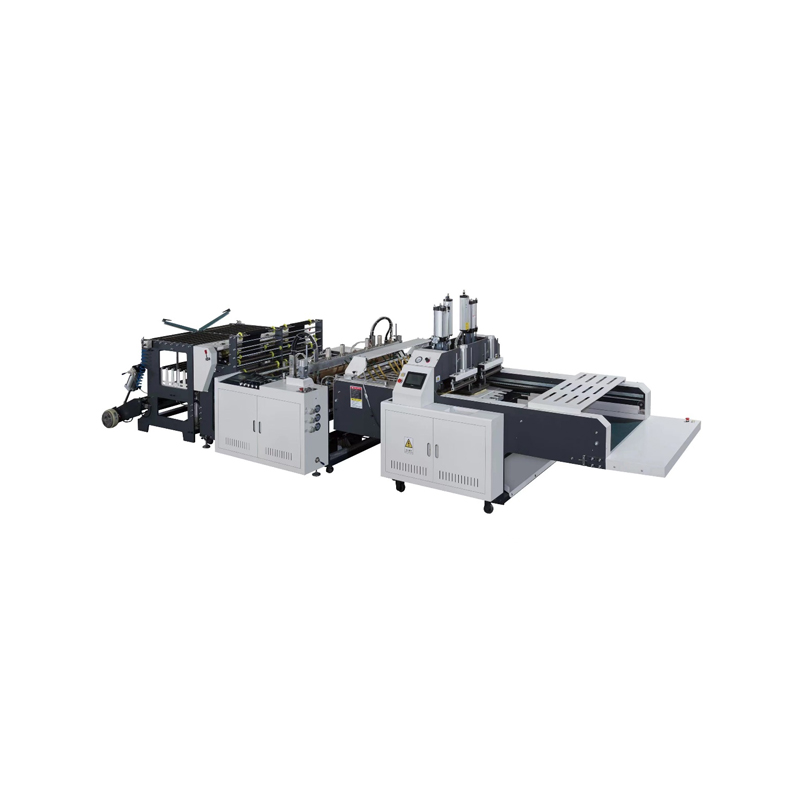Automatic Vest Bag Making Machines: Enhancing Efficiency and Consistency in Flexible Packaging Production
 By Admin
By Admin
Vest bags, recognized for their distinctive T-shirt style and widespread use in retail and grocery sectors, continue to dominate flexible packaging markets due to their convenience and durability. Central to their manufacturing is the Automatic Vest Bag Making Machine, an advanced system designed to streamline production while delivering consistent quality.
As packaging demands evolve with increased focus on speed, material versatility, and environmental responsibility, automatic vest bag machines have emerged as essential equipment.
1. Fully Automated Continuous Operation
Unlike semi-automatic or manual alternatives, automatic vest bag making machines offer uninterrupted, end-to-end processing of vest bags—from film unwinding and feeding to cutting, sealing, handle punching, and stacking.
This continuous automation significantly boosts production efficiency, allowing manufacturers to produce upwards of 80 to 130 bags per minute, depending on model specifications and bag dimensions. Continuous operation reduces labor dependence and production bottlenecks, enabling manufacturers to meet high-volume demands consistently.
2. Compatibility with a Broad Range of Materials
Automatic vest bag machines are engineered for versatility, capable of processing various film materials such as LDPE, LLDPE, biodegradable resins, and recycled polymers. The machines’ adaptable feeding and tension systems accommodate film thicknesses typically ranging from 10 to 50 microns.
This material compatibility is vital as manufacturers seek to align with sustainability goals and regulatory mandates by incorporating eco-friendly materials without sacrificing production efficiency or bag performance.
3. Precision Film Feeding and Registration
Accurate film feeding and registration are critical for maintaining uniform bag size and reducing defects. Automatic vest bag making machines utilize servo-driven feeding units paired with optical or mechanical sensors that detect and adjust film alignment in real-time.

This precise control ensures consistent print registration for pre-printed films, reduces misfeeds, and eliminates wrinkles, enhancing final product appearance and reducing material waste.
4. Advanced Heat Sealing and Cutting Technology
The quality of bag seals and edges is essential for product strength and consumer satisfaction. Automatic machines feature temperature-controlled heat sealing bars that deliver strong, durable seals tailored to the film type and thickness.
Innovative cutting systems—such as rotary knives or ultrasonic cutters—provide clean and consistent bag separation, preventing frayed edges and improving aesthetics. This precision ensures the structural integrity of the bags, vital for carrying heavy or sharp items.
5. Integrated Handle Punching with Adjustable Settings
Vest bags’ ergonomic handles are created by precise punching during the manufacturing process. Automatic machines incorporate synchronized handle punching units that operate seamlessly within the production cycle.
Adjustable punching mechanisms allow customization of handle size and placement to meet client specifications. This feature supports product differentiation and enhances user experience by producing comfortable, durable handles.
6. User-Friendly Control Interfaces and Recipe Management
Modern automatic vest bag making machines are equipped with touchscreen HMIs (Human-Machine Interfaces) offering intuitive control over operational parameters such as bag length, sealing temperature, punching timing, and production speed.
Recipe management capabilities enable operators to store multiple production profiles, facilitating swift transitions between different bag sizes or material types. This reduces setup times and enhances manufacturing flexibility, especially important in multi-product facilities.
7. Automated Quality Monitoring and Fault Detection
To minimize production of defective bags, many automatic vest bag machines feature integrated sensors and vision systems that monitor key quality attributes in real-time. These may include seal integrity, handle positioning, and film alignment.
Automatic fault detection systems can halt production or alert operators when issues arise, thereby reducing scrap rates and improving overall product quality. Continuous monitoring also supports data-driven process improvements.
8. Modular Design for Maintenance and Upgradability
Recognizing the need for operational uptime, automatic vest bag machines are designed with modular components that allow quick access to wear parts such as sealing bars, knives, and punching tools.




